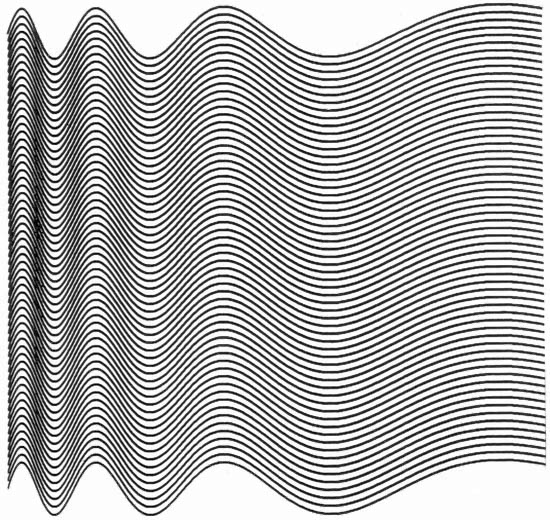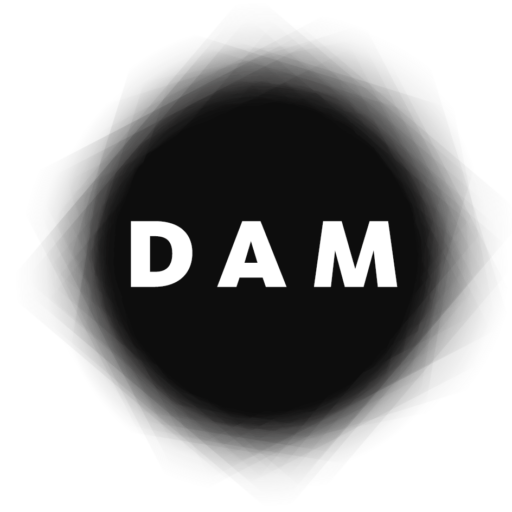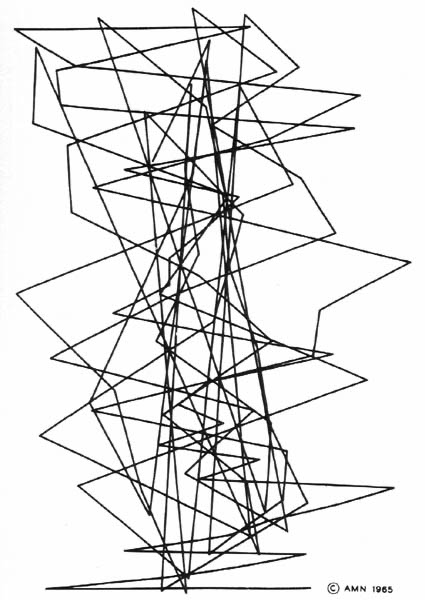
A. Michael Noll is one of the earliest pioneers of digital art. He created his first computer-generated artworks in 1962 while working at Bell Labs, and took part in one of the first exhibitions of digital art, at the Howard Wise Gallery in New York, in 1965. He has devoted his career to research in telecommunications and digital media and is the author of over eighty professional papers and ten books on these subjects.
Further reference:
Annenberg School for Communication and Journalism, USC

Newark, NJ (USA), 1939
With a background in electrical engineering from the Newark College of Engineering, the New York University, and the Polytechnic Institute of Brooklyn (where he obtained his PhD), A. Michael Noll developed a successful career in telecommunications and marketing. He worked at the AT&T Consumer Products and Marketing Department, focusing on the development of new products, and was Director of Technology Research at the Columbia Institute for Tele-information at Columbia University’s Business School. In 1961, he started his research on interpersonal communication, computer graphics and animation, and human tactile communication at Bell Labs in New Jersey. Here he created his first digital computer artworks a year later, using random and algorithmic processes to create visual compositions, making him one of the earliest pioneers of digital art. In April 1965, he exhibited his artworks at the Howard Wise Gallery in New York, alongside other works by Béla Julesz. This was one of the three first shows of computer art in history. He is therefore known as one of the “three big N´s”, the pioneers who first exhibited algorithmic art in 1965 (the other two being Georg Nees and Frieder Nake). That same year, he took part in another exhibition, with Maughan Mason, at the Fall Joint Computer conference in Las Vegas. Noll focused in the late 1960s and early 1970s in the development of interactive input devices and displays that prefigure today’s virtual reality systems. He also created stereoscopic, computer-animated movies, and title sequences for film and television. In 1984, he joined the Annenberg School for Communication and Journalism at the University of Southern California as a professor of communications, and became emeritus in 2006. He has been granted six patents and is the author of ten books on telecommunications and has also written about his experience at Bell Labs.
A. Michael Noll exhibited his work frequently between 1965 and 1975 in several galleries and museums in the USA and Europe. Among other shows, he took part in the seminal group exhibition Cybernetic Serendipity (ICA, London, 1968), curated by Jasia Reichardt. His work is now part of the permanent collections of the Los Angeles County Museum of Art, the Fisher Gallery at the University of Southern California, the Museum of Modern Art (MoMA) in New York and the Academy of Motion Picture Arts and Sciences in Los Angeles.

Noll, M.(1967). The digital computer as a creative medium. IEEE Spectrum, Vol. 4, No. 10, October 1967, p.89-95. [EN]
–– (1970). Art ex machina. IEEE Student Journal, Vol. 8, No. 4, September 1970, p.10-14. [EN]
–– (1994). The Beginnings of Computer Art in the United States: A Memoir. Leonardo, Vol. 27, No.1, 1994, p.39-44.[EN]
–– (2007). The Evolution of Media. Landham, Maryland: Rowman & Littlefield. [EN]
Noll, M. and Geselowitz, M. (2011). Bell Labs Memoirs: Voices of Innovation. New York: IEEE History Center. [EN]

